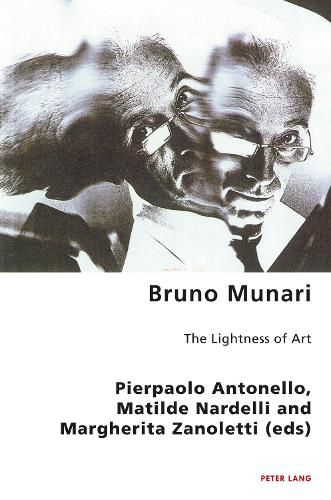Readings Newsletter
Become a Readings Member to make your shopping experience even easier.
Sign in or sign up for free!
You’re not far away from qualifying for FREE standard shipping within Australia
You’ve qualified for FREE standard shipping within Australia
The cart is loading…






This title is printed to order. This book may have been self-published. If so, we cannot guarantee the quality of the content. In the main most books will have gone through the editing process however some may not. We therefore suggest that you be aware of this before ordering this book. If in doubt check either the author or publisher’s details as we are unable to accept any returns unless they are faulty. Please contact us if you have any questions.
Bruno Munari was one of the most important and eclectic twentieth-century European artists. Dubbed the Leonardo and Peter Pan of contemporary art, he pioneered what would later be labelled kinetic art, playing a key role in the constitution and definition of the aesthetic programmes of groups such as Movimento Arte Concreta and Programmed Art. He became an internationally recognized name in the field of industrial design, winning the prestigious Compasso d'Oro prize four times, while also being a prominent figure in Italian graphic design, working for magazines such as Tempo and Domus, as well as renowned publishing companies such as Einaudi and Bompiani. He left an indelible mark as an art pedagogue and popularizer with his famous 1970s artistic laboratories for children and was the author of numerous books, ranging from essays on art and design to experimental books.
Capturing a resurgent interest in Munari at the international level, the exceptional array of critical voices in this volume constitutes an academic study of Munari of a depth and range that is unprecedented in any language, offering a unique analysis of Munari’s seven-decade-long career. Through original archival research, and illuminating and generative comparisons with other artists and movements both within and outside Italy, the essays gathered here offer novel readings of more familiar aspects of Munari’s career while also addressing those aspects that have received scant or no attention to date.
$9.00 standard shipping within Australia
FREE standard shipping within Australia for orders over $100.00
Express & International shipping calculated at checkout
This title is printed to order. This book may have been self-published. If so, we cannot guarantee the quality of the content. In the main most books will have gone through the editing process however some may not. We therefore suggest that you be aware of this before ordering this book. If in doubt check either the author or publisher’s details as we are unable to accept any returns unless they are faulty. Please contact us if you have any questions.
Bruno Munari was one of the most important and eclectic twentieth-century European artists. Dubbed the Leonardo and Peter Pan of contemporary art, he pioneered what would later be labelled kinetic art, playing a key role in the constitution and definition of the aesthetic programmes of groups such as Movimento Arte Concreta and Programmed Art. He became an internationally recognized name in the field of industrial design, winning the prestigious Compasso d'Oro prize four times, while also being a prominent figure in Italian graphic design, working for magazines such as Tempo and Domus, as well as renowned publishing companies such as Einaudi and Bompiani. He left an indelible mark as an art pedagogue and popularizer with his famous 1970s artistic laboratories for children and was the author of numerous books, ranging from essays on art and design to experimental books.
Capturing a resurgent interest in Munari at the international level, the exceptional array of critical voices in this volume constitutes an academic study of Munari of a depth and range that is unprecedented in any language, offering a unique analysis of Munari’s seven-decade-long career. Through original archival research, and illuminating and generative comparisons with other artists and movements both within and outside Italy, the essays gathered here offer novel readings of more familiar aspects of Munari’s career while also addressing those aspects that have received scant or no attention to date.